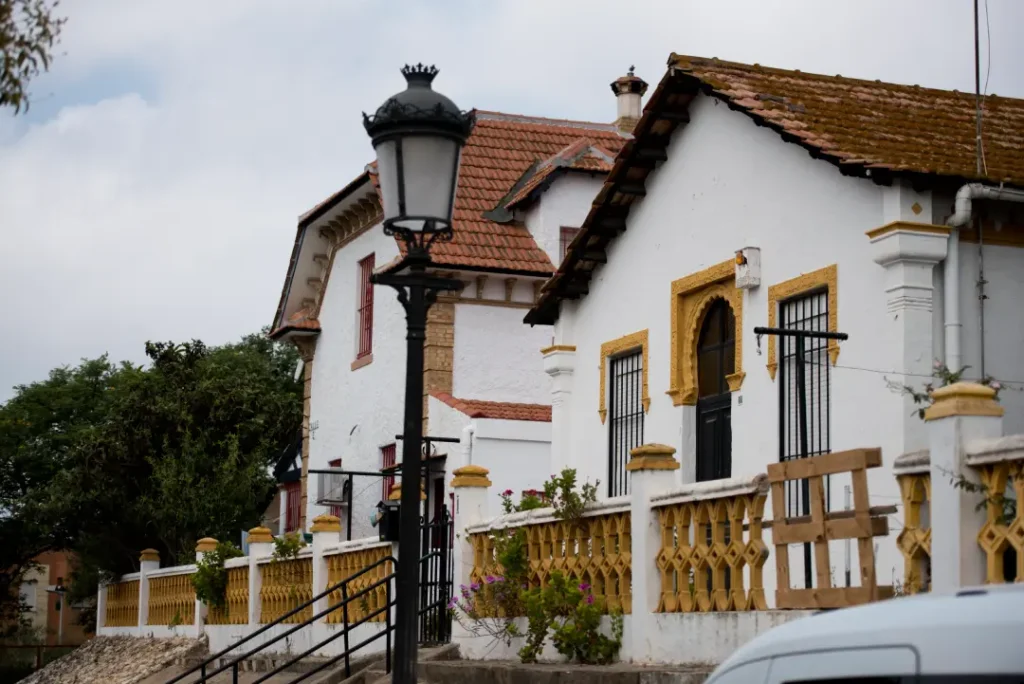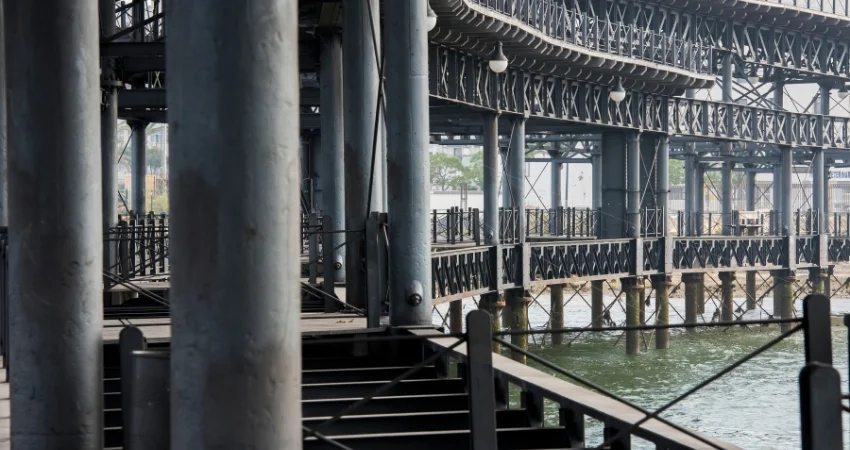From engineering works to majestic buildings and residential neighborhoods, the route will take you through the emblematic places that reflect the British legacy in Huelva. Delve into its charming streets, learn the history behind every corner and let yourself be captivated by the fusion of cultures that make this route an enriching experience for history and travel lovers.
What is it like to walk through an English neighborhood in the center of the city of Huelva?
Get ready to embark on a fascinating journey through the British Legacy in Huelva!
The Casa Colón, auditorium, exhibition center and headquarters of the prestigious Ibero-American Film Festival of Huelva, was inaugurated in 1883 as the Hotel Colón. A hotel conceived to accommodate the directors of the various British companies that operated in the mining area. The complex has a mixture of different styles: elements of British inspiration, colonial and even modernist style.
A symbolic element for the city of Huelva, the Muelle de Tharsis is an example of the avant-garde European design and technology of the late 19th century in civil engineering.
Located in the heart of the Huelva estuary, it can be admired from different points of the city, although it is not currently passable.
Walking the streets of the Reina Victoria neighborhood is like rediscovering a space of the nineteenth century in which the history of Huelva was industrial, mining and British.
Explore the streets and enjoy the experience offered by a visit to a residential area popularly known by the people of Huelva as the “Barrio Obrero”.
Heritage landmark of the city of Huelva declared of Cultural Interest. Since 2007 you can enjoy your visit and spectacular views of the estuary and marshes especially in the evening hours.
The Seville Station is a monument of Huelva that presents a neo-Mudejar style with a marked Andalusian character.
The Nuevo Colombino Stadium, inaugurated in 2001, offers its owner, the Real Club Recreativo de Huelva, modern and functional facilities.
It so happens that these grounds were the same ones on which soccer began to be played in the city back in the 19th century.
It was built in 1902, of small dimensions, this chapel was promoted by San Manuel González García as spiritual consolation of the area of the Matadero- el Polvorín, being within the limits of the parish of the Parish of San Pedro.
It is of eclectic style with gothic touches on its façade. It has a single nave and its construction is in brick with a gabled roof.
The British Cemetery of Huelva, located next to the Soledad Cemetery, reinforces the historical memory of the English presence in the province and its development and influence on Huelva’s society. Find out its history.
Since the mid-19th century, certain areas in the province of Huelva have been chosen for open-cast mining. The area had already had mining settlements since Roman times, but with the arrival of British companies and, of course, the railroad, mining activity in Huelva reached its peak. Through this tourist route, you will immerse yourself in a fascinating journey through the industrial past, where you will discover how the extraction of minerals, especially copper, marked a before and after in the history of the city.
The arrival of British companies and their capital led to numerous technological advances in the area that, today, constitute an authentic British legacy worth visiting in the capital of Huelva. The construction of railroad lines, docks, ports, houses…, changed forever the physiognomy of the city of Huelva, providing it with a heritage worth visiting.
The arrival of British companies and their capital led to numerous technological advances in the area that, today, constitute an authentic British legacy worth visiting in the capital of Huelva. The construction of railroad lines, docks, ports, houses…, changed forever the physiognomy of the city of Huelva, providing it with a heritage worth visiting.

Our tour will take us to the emblematic places where the main British mining companies, such as the Rio Tinto Company, operated. We will explore the impressive architecture and industrial engineering that still remains and that pays tribute to the prosperity and legacy of that era.
Get ready to immerse yourself in an unforgettable journey through time and discover the importance of the British legacy in Huelva. Join us on this unique adventure full of history, culture and unparalleled experiences that will lead you to understand the richness of the British heritage in our city. Welcome to the British Legacy Route in Huelva!
Our tour will take us to the emblematic places where the main British mining companies, such as the Rio Tinto Company, operated. We will explore the impressive architecture and industrial engineering that still remains and that pays tribute to the prosperity and legacy of that era.
Get ready to immerse yourself in an unforgettable journey through time and discover the importance of the British legacy in Huelva. Join us on this unique adventure full of history, culture and unparalleled experiences that will lead you to understand the richness of the British heritage in our city. Welcome to the British Legacy Route in Huelva!
